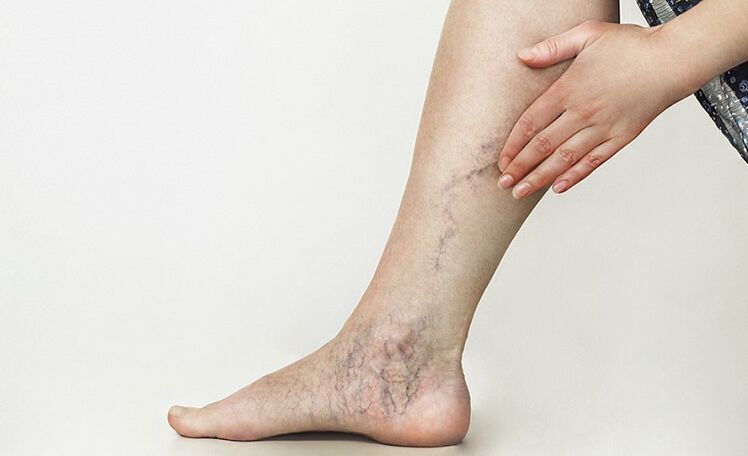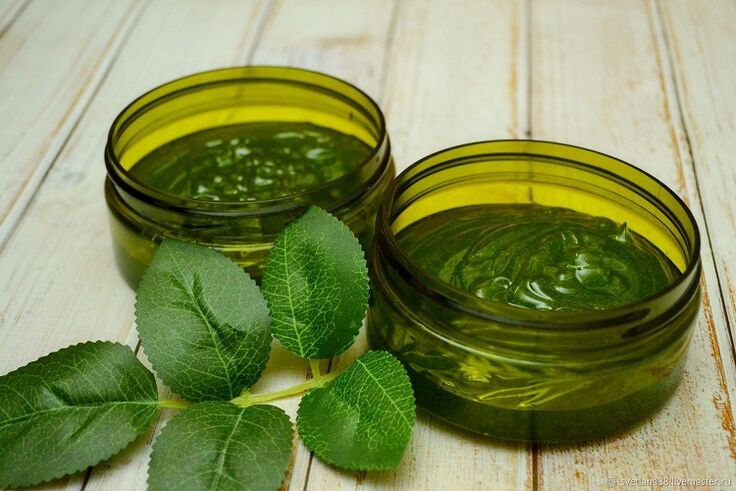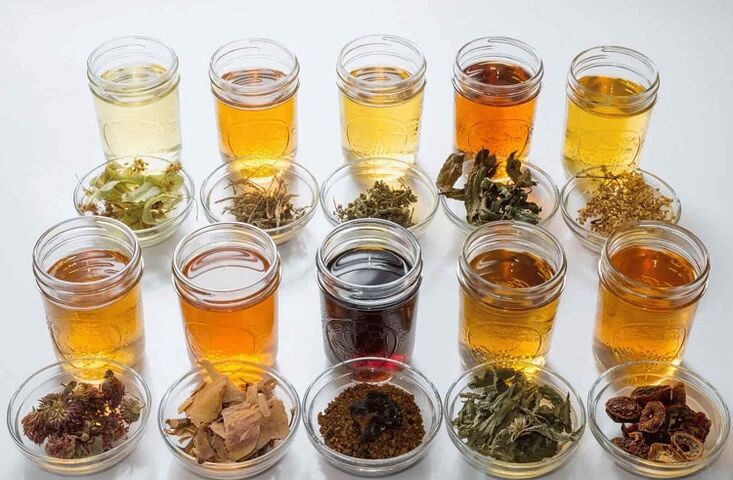Varicose veins, or simply varicose veins, are dangerous vascular diseases that primarily affect the veins of the lower extremities. The pathology appears more frequently in women, especially during pregnancy, when the load on the legs increases significantly. It develops as a result of the thinning of blood vessel walls and the appearance of aneurysms resulting from increased blood pressure. The disease is caused by the following factors: sedentary lifestyle, standing for a long time, constant jumping movement, heredity, some internal pathologies. In men, it is usually associated with bad habits, overweight and heavy physical work.
If left untreated, the disease leads to serious complications. As a rule, doctors approve of a combination of drug therapy and folk remedies.

disease symptoms
Symptoms of varicose veins in the lower extremities depend on the stage of the disease:
- Stage I is characterized by small changes and usually goes unnoticed. At this stage, the following signs appear: swelling and feeling of heaviness in the legs, rare night cramps, mild pain in the legs. One of the important symptoms is the appearance of spider veins on the legs, which is usually the reason for a woman's visit to a phlebologist.
- In stage II, symptoms are more pronounced, the painful sensations and swelling of the lower extremities become permanent and do not disappear even after prolonged rest. Painful nodules appear on the legs and intense itching on the affected areas of the skin, periodically there is a feeling of numbness in the legs. At this stage, conservative treatment is possible.
- Stage III is characterized by an increase and compaction of the venous nodules, with bulging above the skin level. The patient is accompanied by constant pain at the sites of formation of the nodules, the risk of injuring them increases significantly, causing bleeding. This degree is characterized by the short duration or lack of effect from the use of specialized ointments and creams.
- In stage IV, all symptoms are aggravated, trophic leg ulcers are added to them. Blood vessels stop supplying blood to tissues, which leads to necrotic processes.
- Stage V is characterized by persistent, non-healing trophic ulcers.
- In stage VI, the patient has difficulty moving, trophic ulcers spread to healthy tissue, and infection is possible.
Only the first two stages are amenable to conservative treatment. Neglected forms of the pathological condition require surgical intervention.
treatment methods
There are several methods of treatment: conservative drug therapy, surgery and the use of folk remedies.
The conservative method consists of the use of venotonics in the form of ointments and pills, anticoagulants, vitamin complexes. During the onset of trophic ulcers, medications are used as maintenance therapy. As a rule, prescribe antiseptics for topical use, drugs from the group of internal antibiotics, immunostimulants, vitamins, agents that promote tissue regeneration.
Folk remedies against varicose veins are now widely used in the complex treatment of pathologies. Distinguish between external agents, therapeutic baths and compositions for internal use.
Formulations for external use
Among the external methods of traditional medicine, the following recipes are the most popular:
- The use of red and green tomatoes has long been considered an effective way to remove swelling and heaviness in your legs. To do this, it is necessary to cut the fruit into slices, completely cover the legs with them and secure with a very tight dressing. Agent exposure time is 1 to 2 hours. After that, the dressing must be removed and the procedure repeated several times. The course duration is 2 weeks.
- Apple cider vinegar treatment is considered to be one of the most effective methods for dealing with varicose veins in the early stages. Its application consists of daily lubrication of the affected areas, twice, with a cotton swab soaked in natural apple cider vinegar.
- In the early stages of the disease, wrapping with honey is allowed. The procedure must be performed monthly, for four consecutive days. Lubricate problem areas with plenty of natural honey and wrap with compression bandage, leave for 2 hours. Conduct an evening session.
- In the onset stage of trophic ulcers, plain potatoes help. The essence of the method is to apply a raw grated tubercle in the foci of trophic changes for 5 hours and fix the compress with a dressing. The duration of treatment depends on the severity of the skin condition.
- One of the simplest recipes involves using fresh cabbage leaves as healing compresses. It is necessary to apply them to the sick limbs every day for a month and fix them with a bandage. It is best to perform the procedure at night and leave the compress until morning.
- Homemade peanut butter is an effective remedy for varicose veins. To obtain the composition, take the green fruits, chop and pour the oil so that the raw materials are completely covered. Heat the mixture a little over low heat and pour into a glass jar, let it steep for a month. Thereafter, the agent should be applied daily to lubricate the protruding veins.
- A composition of equal amounts of aloe vera juice, olive oil and sea buckthorn oil will help reduce itching and relieve irritation in painful areas. The tool should be used to treat the epidermis of the legs in the morning and at night.
- St. John's Wort Oil deals well with ulcerative lesions on the lower extremities. It is not difficult to prepare it at home. It is necessary to pour 100 g of dry raw material with 400 ml of sunflower oil and heat over low heat for 6 hours. After that, stretch the composition and apply as compresses directly to the ulceration site.
- Pharmaceutical products can also be supplemented with natural ingredients. Ichthyol ointment and Vishnevsky ointment should be taken 10 g each, add 10 g of pork fat, aloe juice and honey. Warm up a little and treat ulcerated lesions, fixing the compresses with a bandage. Needs to be changed once a day.
- Fresh lilac leaves help eliminate swelling and heaviness in your legs. For this, it is necessary to place them on the legs, fix with a bandage and leave for 2 hours. Repeat the procedure several times throughout the day.
- Fresh birch leaves help treat varicose veins at home. To do this, you need to find tall bags, fill them with raw material, and insert your legs into them. When members are sweating a lot, it is necessary to terminate the session. You will need fresh leaves next time. As a general rule, 2-3 procedures are sufficient to eliminate swelling and heaviness in your legs.
- In summer, the use of fresh absinthe is allowed. It is necessary to cut several branches of the plant, wash, dry, chop, mix with the same amount of yogurt. Distribute the composition on natural tissue napkins and wrap the affected limbs, leave for 30 minutes. During the period of exposure to the agent, it is recommended to be in supine position with legs raised. This recipe should be used daily for a month.

Medicinal plants in the form of decoctions and tinctures have long been used to treat varicose veins. The following recipes proved to be:
- A decoction of hop cones is used for compresses. It must be prepared from 2 tablespoons of crushed raw material and 500 ml of water. The composition must be boiled for 15 minutes, filtered and cooled. It is recommended to moisten a napkin made of natural fabric and wrap the sore limbs.
- The alcohol tincture of the white flowers of the acacia effectively combats nodules in the lower extremities. For 100 ml of vodka, you will need 80 g of crushed dried flowers. They need to be infused for 10 days and used to treat the affected areas daily until the condition improves.
- A celandine broth can be used for compresses. The preparation of the composition is simple: 4 tablespoons of dry raw material must be boiled in a liter of water for 20 minutes, infused for 12 hours, filtered. Moisten a linen napkin in the resulting liquid and wrap it around the lower leg, leave for an hour, having previously fixed with a bandage. After removing the dressing, it is recommended to lubricate the shins with sunflower oil. The duration of treatment is one week, so it is recommended to take a 10-day break and repeat. For a full recovery you will need 2-3 courses.
- Kalanchoe tincture, which is used for rubbing and massaging, has healing properties. Preparation is simple: fill half a bottle with half a liter of chopped plant leaves, pour vodka so that the entire container is filled. Insist a week in a dark place, drain. Use the product daily before bed, rubbing your legs from toes to knees with light massage movements.
- The treatment of varicose veins at the stage of trophic ulcers can be carried out with the help of a decoction of medicinal herbs: chamomile, calendula, yarrow, St. John's wort, horsetail. The components must be mixed in equal amounts, take a tablespoon of the mixture, pour 500 ml of boiling water, boil for several minutes. Use the ready-made makeup for compresses or washing lesions.
Many medicinal plants and folk remedies have contraindications and side effects, so it is recommended to consult your doctor before using them.
healing baths
The use of natural remedies like curative baths significantly alleviates the patient's condition. Compositions for the procedure can be prepared according to the following recipes:
- A decoction of willow and oak bark effectively combats swelling of the lower extremities. It's simple to prepare: you need to take 50 g of ground dry raw material, boil for several minutes in 5 liters of water, cool and lower the legs into the composition for 20 minutes.
- Chestnut baths are considered an effective remedy against varicose veins. Pour 100 g of chestnut husk with 2 liters of boiling water, boil for 15 minutes, leave for 6 hours and add to a bowl of water. Lower limbs for 20 minutes.
The use of therapeutic hot baths is categorically contraindicated in patients prone to thrombosis or diagnosed with thrombophlebitis.
Products for indoor use
Taking alternative remedies strengthens the blood vessel walls from the inside and promotes rapid recovery. Effective formulations can be prepared according to the following recipes:
- Fresh and dried carrot tops can be used to make medicinal tea. To do this, it is necessary to insist a teaspoon of raw material for an hour in a glass of boiling water. You need to take the composition three times a day.
- A garlic and honey recipe has long been used to treat blood vessels. It is necessary to grind 700 g of garlic into porridges, mix it with a kilo of honey and eat a spoonful of the mixture before main meals.
- An infusion of dry nettle 3 times a day, 125 ml, is recommended. The preparation is simple: take 2 tablespoons of herbs per 500 ml of boiling water, leave for 1 hour.
- It is recommended to drink fresh chestnut flower juice in 25 drops, dissolved in a glass of water, in the morning and in the evening.
- Shilajit can take 1 tablet in the morning and evening, previously dissolved in water.
- Alcohol tincture can be prepared based on nutmeg. To do this you need to pour 200 g of crushed raw material with a liter of high quality vodka, leave for 14 days. Drink 20-30 drops until the product runs out.
- The infusion of hazelnut leaves effectively fights disease. A scoop of dry raw material should be left for 30 minutes in a cup of boiling water. Consume 100 ml 4 times a day.

Internally used means not only contribute to the treatment of the disease, but also strengthen the organism, which is necessary during the therapy period.
Varicose veins in the lower extremities are a serious condition. Ignoring symptoms leads to dire consequences. There is no point in starting the disease, as in later stages the only treatment option is surgery.












































